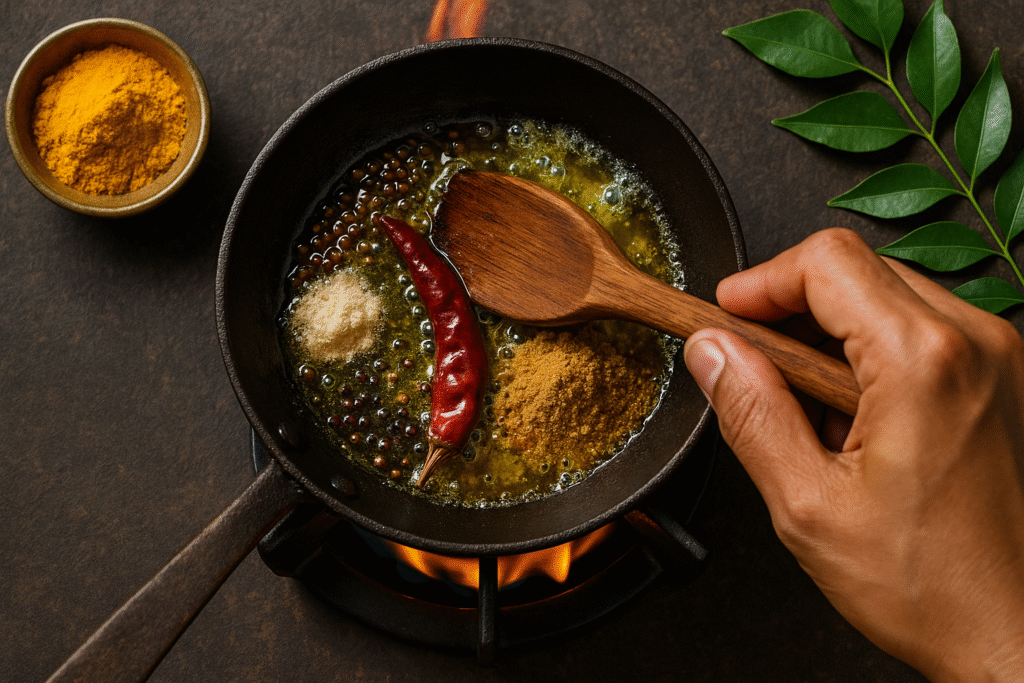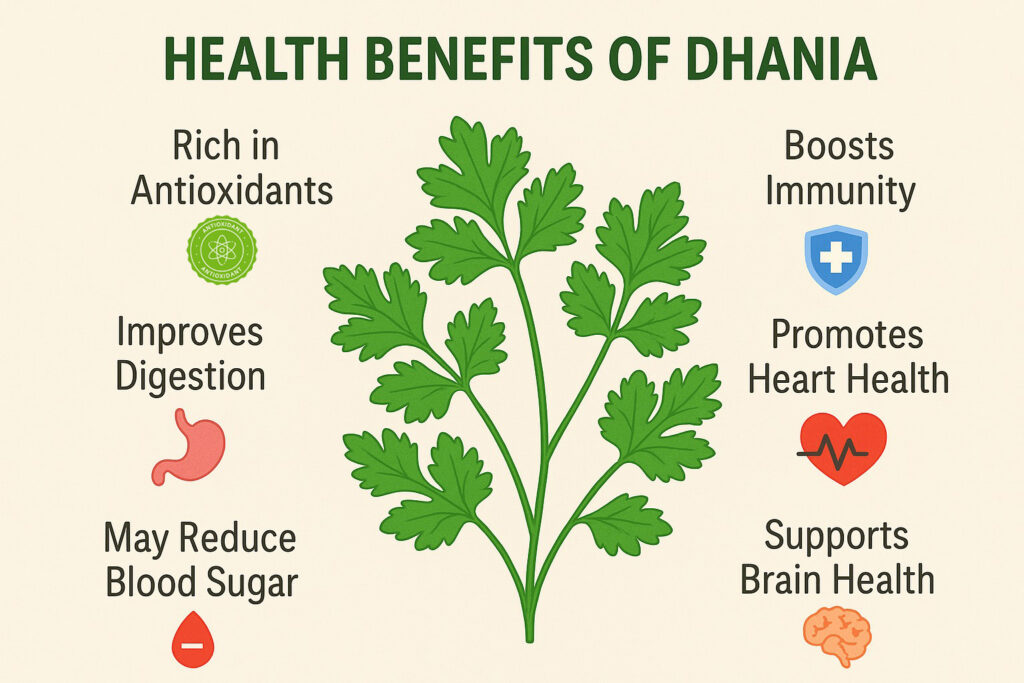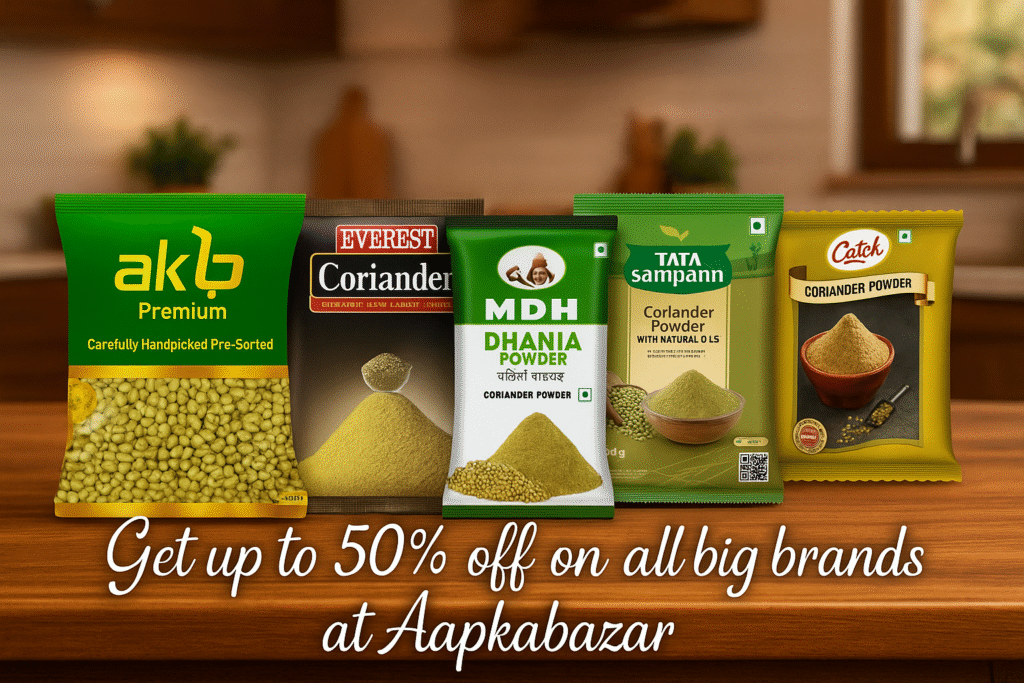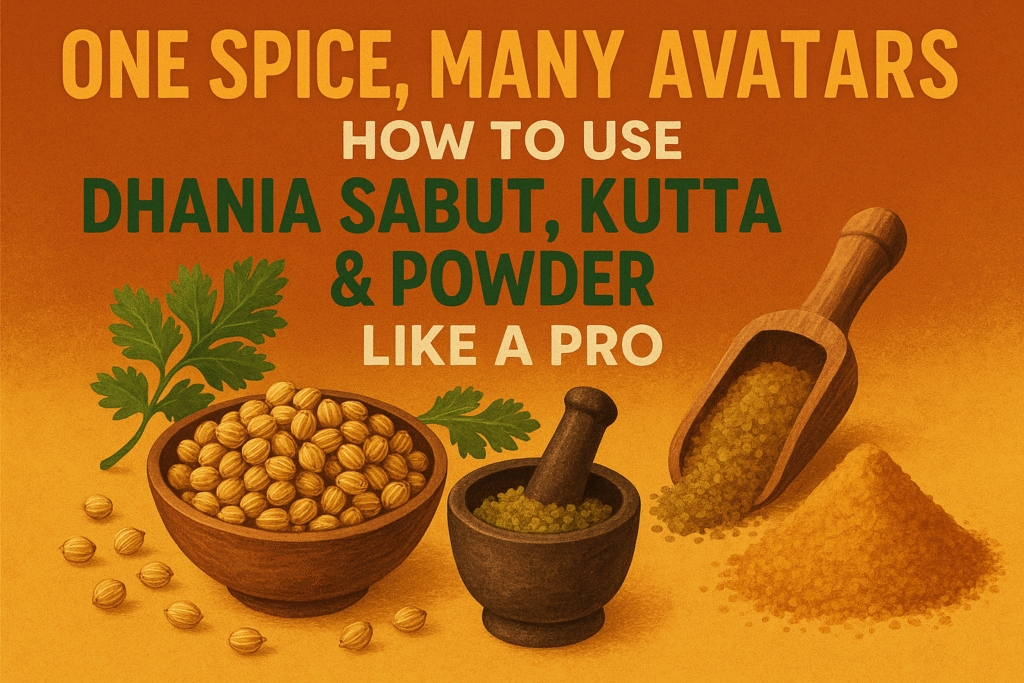If you’ve ever stood in your kitchen, confused between reaching for dhania powder or those coarse golden sabut dhania seeds, you’re not alone. I’ve been there. Cooking isn’t just about technique—it’s about instinct, memory, and the subtle choices that make your food yours.
For years, I used only ground coriander out of habit. Until I accidentally bit into a chunk of kutta dhania in a friend’s homemade chhole and thought, “Why does this taste so much more?” That led me down a rabbit hole—and here’s what I found.
Coriander isn’t just one spice. It’s three different characters.
Each with its own flavor, purpose, and magic.
🌿 Dhania Sabut: The Whole Truth Behind the Flavor
I remember watching my grandmother roast dhania sabut on a tawa. She’d crush it between her fingers, lean in to smell it, and smile. It wasn’t just a spice—it was a ritual.
Whole coriander seeds are warm, nutty, and citrusy all at once. Toss them in hot oil, and they crackle like applause—releasing aroma that feels like home.
I use them when I want my food to feel rustic and rooted.
- In dal tadkas, where they hold their ground beautifully
- In homemade pickles, giving that signature Indian crunch
- Even in chai, on winter mornings, when I want an earthy undertone
Pro tip from my kitchen: Always dry-roast sabut dhania and store it airtight. Use a mortar-pestle to crush just what you need for the freshest flavor.
💥 Dhania Kutta: The Rough, Bold Middle Child

Ah, kutta dhania—the form I ignored the longest and now swear by.
It’s not as neat as powder, not as structured as whole seeds. But it hits different. It gives your food texture and an occasional surprise burst of flavor—like biting into something ancient and warm.
Where I use it most:
- In my paneer tikka marinade—just a teaspoon, and suddenly the bland paneer has character
- In pickles, especially carrot or chilli ones
- On top of aloo sabzi or chhole, as a final punch of texture
It’s the kind of spice you use when you want your food to speak a little louder.
🌾 Dhania Powder: The Familiar Friend
Most of us start here—dhania powder is the default. And honestly, that’s okay. It’s mild, rounded, and blends beautifully into everything.
I use it almost daily:
- While cooking sabzis like aloo gobhi or bhindi
- In gravies where I want depth without overpowering heat
- As part of my dry masala blend for everything from cheelas to stuffed parathas
But here’s the truth: it’s the spice that disappears into the dish. It works best when you want harmony, not fireworks.
Kitchen lesson: Never compromise on quality. Cheap, stale coriander powder is like cardboard dust. Buy good stuff—or make your own by grinding roasted sabut dhania at home.
🌿 Not Just Flavor—Dhania Is a Wellness Hero Too
Let’s be honest—most of us reach for dhania because of its aroma or how it balances spice with a mellow, earthy touch. But did you know it’s also quietly doing your body a whole lot of good?
Here’s what this humble spice brings to the table (literally):

🩺 Digestive Aid: Dhania, especially in sabut form, has long been used in Indian homes as a natural way to soothe the stomach, reduce bloating, and boost digestion. My nani used to steep it in hot water after heavy meals—turns out, she knew what she was doing.
💖 Blood Sugar Friendly: Some studies suggest that coriander seeds may help manage blood sugar levels. Great news if you’re looking for flavor without guilt.
🧠 Rich in Antioxidants: Whole and crushed coriander are loaded with antioxidants that help fight inflammation and protect your cells from damage.
❤️ Heart Health Helper: It’s also known to support heart health by lowering bad cholesterol while increasing the good kind. Who knew your tadka could be so heart-smart?
🌿 Natural Detox: Coriander has mild diuretic properties, helping your body flush out excess water and toxins gently.
So next time you add a pinch of powder or roast a few sabut seeds, know that you’re not just making your food tastier—you’re feeding your body something it actually thanks you for.
🧂 So Which One’s the Best?
That’s like asking which shade of yellow is better. They’re all different, and they’re all necessary.
Think of it like this:
- Sabut is for impact
- Kutta is for texture and sharpness
- Powder is for consistency and smooth blending
A good Indian cook doesn’t choose one. We use all three—strategically, like a painter choosing between brush and sponge and fingertip.
🏷️ Quick Comparison Snapshot
| Type | Texture | Flavor Profile | Best Use Cases |
|---|---|---|---|
| Sabut (Whole) | Crunchy, intact | Warm, citrusy, earthy | Tadka, pickles, chai infusions |
| Kutta (Crushed) | Gritty, coarse | Sharp, bold, textured | Marinades, achar, toppings for sabzis |
| Powder | Fine, smooth | Mellow, sweet, balanced | Curries, masalas, dry rubs, everyday dishes |
🧄 How I Layer All 3 in One Simple Meal
Let me walk you through a real example from my dinner last night: masoor dal tadka.
- I started by tempering mustard seeds and sabut dhania in ghee—just enough to crackle.
- As the dal simmered, I added dhania powder along with haldi and jeera for a mellow depth.
- And just before serving, a pinch of kutta dhania over the hot dal gave it texture, aroma, and a kick.
That’s three versions of one spice—playing together to build a meal that feels both familiar and fresh.
🛒 Where I Buy All Three—Without Stressing

I’ve stopped hunting around for different forms of dhania. I just go to Aap Ka Bazar.
Why? Because I know I’m getting clean, unadulterated, sun-dried dhania—in whichever form I need.
- Dhania Sabut – aromatic and intact
- Dhania Kutta – perfectly crushed, not dusty
- Dhania Powder – fresh, finely milled, and full of flavor
No middlemen, no weird aftertaste. Just spice that feels like it came from a home kitchen.
🧠 Final Thought: Don’t Underestimate the “Simple” Spices
Coriander doesn’t shout like chilli. It doesn’t dance on your tongue like hing. But it’s the quiet backbone of Indian cooking—the whisper behind every bold flavor.
Next time you cook, take a second to think:
Do you want your dhania to blend in, stand out, or surprise you?
Because now, you know exactly which one to pick.
✨ If dhania brings depth and warmth to your curries, then Maggi Shahi Gravy Masala adds the royal finishing touch—especially in dishes like Shahi Paneer and Kadai Paneer. Learn how both spices can work together to elevate your everyday cooking in our blog: Maggi Shahi Gravy Masala: Royal Flavor in Shahi Paneer & Kadai Paneer.



